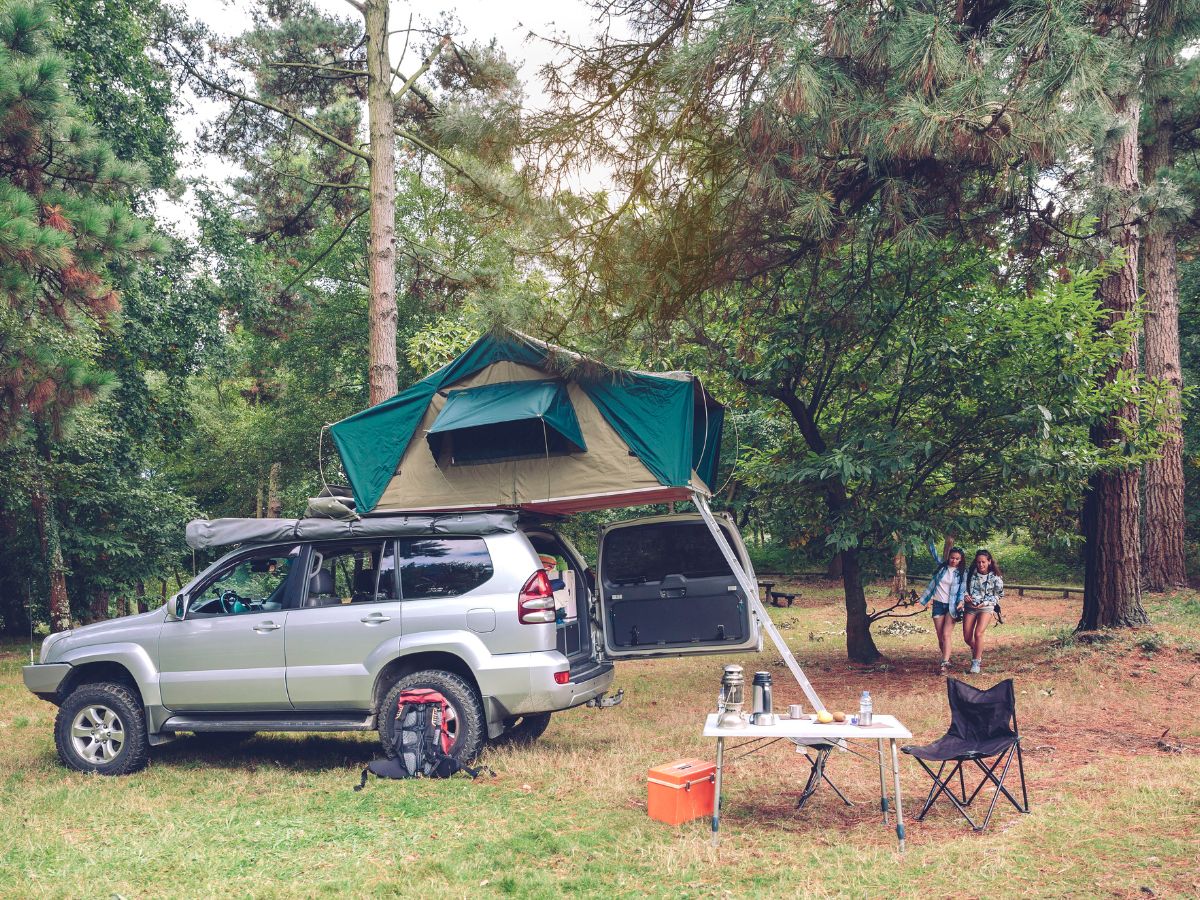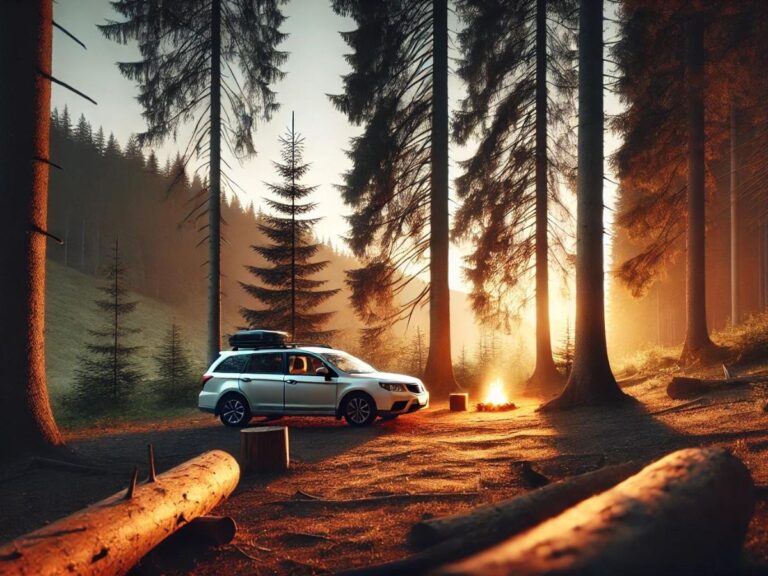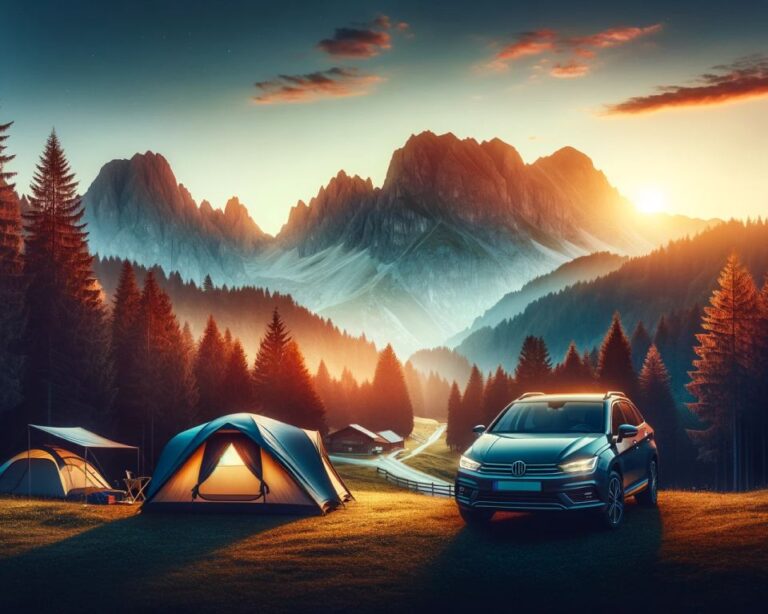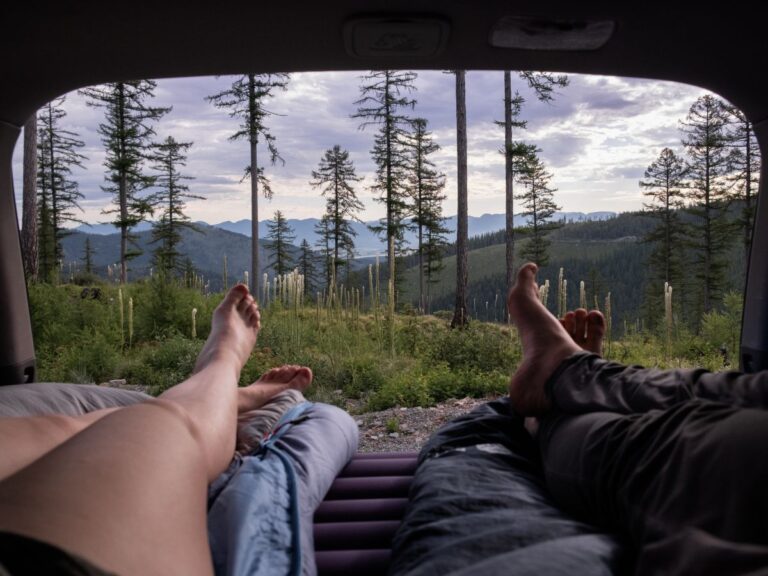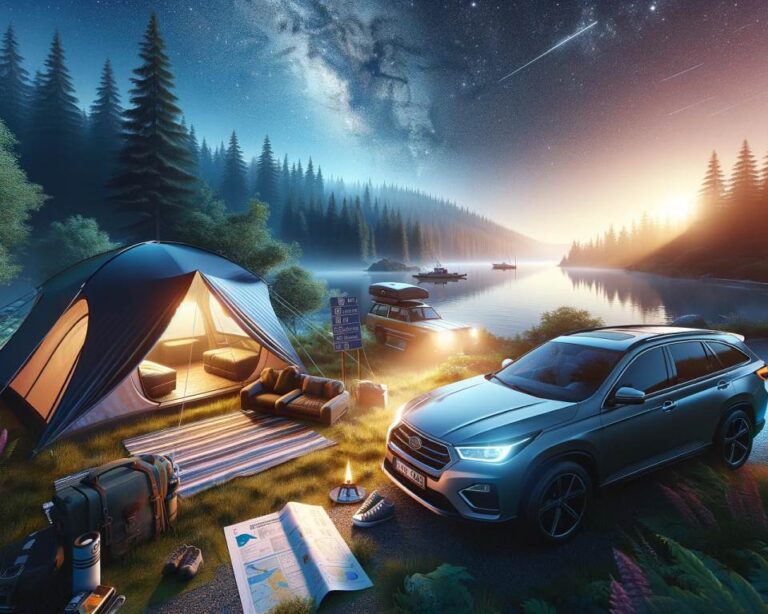7 Essential Guidelines to Assure It's OK to Camp in Your Car
For a safe and comfortable car camping experience, follow seven essential guidelines: Ensure proper ventilation, park in designated areas, respect Leave No Trace Principles, prioritize safety measures, obey local regulations, pack essential gear, and plan waste disposal. Ventilation is key for safety, while designated parking areas help minimize environmental impact. Respecting regulations and packing right are vital. Remember safety measures and environmentally responsible actions. By following these guidelines, you can make sure your car camping trip is enjoyable and stress-free.
Proper Ventilation for Safety
Make sure you have proper ventilation in your car while camping to maintain a safe and comfortable environment. Ventilation is important for several reasons when camping in your car. Firstly, it helps to circulate fresh air, preventing the buildup of moisture and condensation inside the vehicle. This is essential for avoiding mold and mildew growth, which can pose health risks. Additionally, adequate ventilation guarantees that there is a constant supply of oxygen, which is essential for your well-being, especially when sleeping in a confined space.
To enhance ventilation in your car, consider installing window screens. These screens not only keep bugs and insects out but also allow for airflow without compromising your safety. They are easy to set up and provide an effective solution for keeping your car well-ventilated even when parked in secluded areas.
Parking in Designated Areas
To guarantee a safe and hassle-free camping experience in your car, pay close attention to where you park by prioritizing designated areas. When parking in designated areas, you not only secure your safety but also minimize your environmental impact. Designated areas are specifically chosen to provide a secure environment for campers, reducing safety concerns that may arise from parking in unknown or unsafe locations. These areas are often equipped with facilities like restrooms, trash disposal, and emergency services, enhancing your overall camping experience.
Leave No Trace Principles
When practicing camping in your car, remember to adhere to the Leave No Trace Principles to minimize your impact on the environment. By following these principles, you can guarantee that your camping experience is not only enjoyable but also sustainable for the natural surroundings you are exploring.
To achieve minimal impact and practice sustainable camping, start by properly disposing of all waste. Pack out all trash with you, leaving no litter behind. Additionally, be mindful of where you park your car to avoid damaging vegetation or disturbing wildlife. Stick to designated areas whenever possible to reduce your footprint on the environment.
Furthermore, when setting up your campsite, choose durable surfaces like gravel or pavement to park your car on. This helps prevent soil erosion and protects the landscape from unnecessary harm. Remember, the goal is to leave nature as you found it, or even better, by leaving no trace of your presence except for cherished memories.
Safety and Security Measures
When camping in your car, ensuring your safety and security is essential. Consider the locking mechanisms of your vehicle, explore surveillance options like motion-sensor lights, and always be prepared for emergencies. These measures will help you enjoy a worry-free camping experience.
Locking Mechanisms
Improving the locking mechanisms in your car while camping is essential for ensuring your safety and security throughout your trip. When setting up for the night, consider installing window covers for added privacy. This simple addition not only shields you from prying eyes but also enhances security by making it harder for potential intruders to see inside.
In addition to window covers, implement safety precautions such as ensuring all doors are securely locked. Interior lighting can act as a deterrent for unwanted visitors, so keep a small light on inside your vehicle. This not only helps you see better if you need to move around at night but also signals to others that someone is inside, deterring any potential threats.
Surveillance Options
Consider incorporating surveillance options into your camping setup to enhance safety and security measures during your trip. Privacy concerns are valid, but there are security solutions available to address them effectively. Remote monitoring through the use of hidden cameras can provide you with peace of mind knowing that you can keep an eye on your surroundings even when you’re not physically present.
Hidden cameras can discreetly capture any activity happening around your campsite, allowing you to monitor for any potential threats or intrusions. By setting up remote monitoring capabilities, you can access live feeds or recordings from your cameras through your smartphone or other devices, giving you real-time information about your campsite’s surroundings.
These surveillance options not only act as a deterrent to potential wrongdoers but also offer you the ability to respond quickly to any security concerns that may arise. With the proper setup and use of hidden cameras for remote monitoring, you can greatly enhance the safety and security of your camping experience.
Emergency Preparedness
Enhance your camping safety and security measures by prioritizing emergency preparedness through proactive planning and strategic measures. Being prepared for unforeseen events can make a significant difference in your camping experience. Here are three essential safety measures to prioritize:
- First Aid Kit: A well-stocked first aid kit is a must-have for any camping trip. Make sure your kit includes bandages, antiseptic wipes, pain relievers, and any necessary personal medications. Being prepared to handle minor injuries can prevent them from escalating into major issues.
- Emergency Contacts: Always have a list of emergency contacts readily available. Include local emergency services numbers, as well as contacts of family or friends who can help in case of an emergency. Having these contacts easily accessible can save precious time in critical situations.
- Emergency Plan: Develop an emergency plan with clear steps on what to do in different scenarios. Discuss the plan with your camping companions so everyone is on the same page and knows how to react in case of an emergency. Preparedness is key to ensuring a safe and enjoyable camping trip.
Respect Local Regulations
Adhere to local regulations to guarantee a smooth and enjoyable camping experience in your car. When it comes to camping etiquette and respecting local laws, it’s important to be informed before setting out on your adventure. Different areas may have specific rules regarding where you can park overnight, how long you can stay, and what activities are allowed. By taking the time to research and understand these regulations, you can make sure a hassle-free experience and avoid any potential fines or disturbances.
Before you start on your car camping journey, make sure to check the local laws and guidelines for the area you plan to visit. Some places may have restrictions on overnight parking or camping in certain locations. Always follow designated camping areas and respect any posted signs or instructions. Remember, being a responsible camper not only ensures your safety but also helps preserve the environment and maintain a positive relationship with the local community. By following camping etiquette and adhering to local regulations, you can enjoy a worry-free and fulfilling car camping experience.
Essential Gear and Supplies
Let’s talk about the essential gear, vital supplies, and thorough packing techniques you need to make your car camping adventure a success. From a detailed gear checklist to stocking up on important supplies, we’ll cover everything you need to guarantee a smooth and enjoyable trip. By being well-prepared and organized, you’ll be ready to hit the road and embrace the great outdoors with confidence.
Gear Checklist
Make sure to pack essential gear and supplies that will guarantee a comfortable and safe camping experience in your car. Here are three key items to include in your gear checklist:
- Safety Precautions: Prioritize safety with a well-equipped first aid kit, emergency supplies like a flashlight, batteries, and a multi-tool. It’s important to have these items readily accessible in case of any unexpected situations during your camping trip.
- Equipment Checklist: Bring along camping essentials such as a portable stove for cooking, a reliable cooler to store food, and a comfortable sleeping bag or air mattress. These items will help you cook meals, keep perishables fresh, and get a good night’s rest while camping in your car.
- Ventilation Set Up: Improve airflow in your car by investing in window screens or mosquito nets to keep bugs out while allowing fresh air to circulate. Proper ventilation is crucial for a comfortable and safe camping experience inside your vehicle.
Essential Supplies
Make sure you have all the essential gear and supplies necessary for a successful camping experience in your car. When it comes to sleeping comfort and hygiene essentials, pack a cozy sleeping bag or blankets, pillows for a good night’s rest, and consider an inflatable mattress for added comfort. Don’t forget to bring along hygiene essentials such as wet wipes, hand sanitizer, and biodegradable soap to keep clean during your trip.
For cooking equipment and meal prep essentials, a portable stove or grill can be a game-changer for preparing hot meals on the go. Make sure to pack cookware like pots, pans, and utensils, along with easy-to-prepare foods like canned goods, instant noodles, and snacks. Don’t overlook the importance of having a reliable cooler to store perishable items and plenty of drinking water to stay hydrated.
Packing Efficiently
Efficiently packing your essential gear and supplies is crucial for a successful camping experience in your car. To guarantee you have everything you need while maximizing space, follow these expert tips:
- Space Management: Utilize storage bins or organizers to keep your gear tidy and easily accessible. Pack heavier items low and towards the front of your car to maintain balance and prevent shifting while driving.
- Comfort Essentials: Invest in high-quality sleeping gear such as a cozy sleeping bag, inflatable mattress, and supportive pillows. Creating a comfortable sleeping arrangement will help you rest well and wake up refreshed for your adventures.
- Organization: Use clear plastic bags or labeled containers to separate and categorize your supplies. This will not only save space but also make it simpler to locate items when needed. Keep frequently used items within reach to avoid rummaging through your entire load.
Plan for Waste Disposal
When camping in your car, it is important to have a well-thought-out plan for waste disposal to guarantee cleanliness and environmental responsibility. Proper waste management is essential to minimize your environmental impact and ensure the sustainability of the places you visit. To effectively handle waste while camping in your car, consider the disposal options available to you.
Start by carrying reusable trash bags to separate your waste. Designate one for general trash and another for recyclables. This simple step can greatly reduce the amount of waste you generate and make it easier to dispose of them correctly. When it comes to disposing of waste, always follow the principles of leave no trace. Pack out all your trash and dispose of it properly in designated facilities.
Additionally, consider investing in portable toilets or using established restroom facilities whenever possible. Proper waste disposal not only maintains cleanliness but also shows respect for the environment and other campers. By planning for waste disposal, you can enjoy your car camping experience responsibly and sustainably.
Essential Guidelines for Safe and Enjoyable Car Camping
To sum up, following these essential guidelines will guarantee that camping in your car is not only safe, but also enjoyable. Proper ventilation, parking in designated areas, and respecting local regulations are key to a successful experience. By practicing Leave No Trace principles, prioritizing safety and security, and planning for waste disposal, you can have a stress-free and responsible camping trip. So grab your gear, hit the road, and enjoy the great outdoors from the comfort of your own vehicle!

